Related Research Articles

Eupithecia tantillaria, the dwarf pug, is a moth of the family Geometridae. It was described by Jean Baptiste Boisduval in 1840. The species can be found in the Palearctic realm.
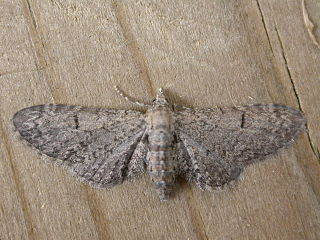
Eupithecia ultimaria, the Channel Islands pug, is a moth of the family Geometridae. The species was first described by Jean Baptiste Boisduval in 1840. It can be found in Europe, where it is found in Portugal and Spain, coastal western and southern France, Italy, the Mediterranean islands including Cyprus and Greece. It is also found in southern England and the Channel Islands. Furthermore, it is present in North Africa, Lebanon, Israel, Iraq and Iran.
Anthometra is a monotypic moth genus in the family Geometridae. Its only species, Anthometra plumularia, is found in southwestern Europe. Both the genus and species were first described by Jean Baptiste Boisduval in 1840.
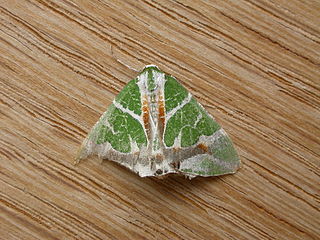
Chlorodes is a monotypic moth genus in the family Geometridae erected by Achille Guenée in 1857. Its only species, Chlorodes boisduvalaria, or Boisduval's emerald, first described by Élie Jean François Le Guillou in 1841, is known from Australia, including Tasmania.
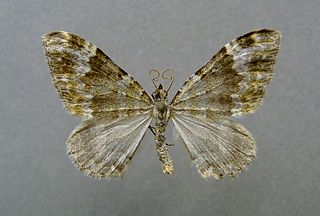
Coenotephria is a genus of moths in the family Geometridae described by Prout in 1914. Its species are primarily found in Europe and Asia.

Colostygia is a genus of moths in the family Geometridae erected by Jacob Hübner in 1825.

Heliothea is a genus of moths in the family Geometridae erected by Jean Baptiste Boisduval in 1840.

Lycia is a genus of moths in the family Geometridae.
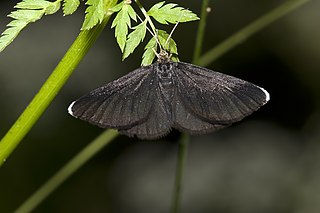
Odezia is a monotypic moth genus in the family Geometridae erected by Jean Baptiste Boisduval in 1840. Its only species, Odezia atrata, the chimney sweeper, was first described by Carl Linnaeus in his 1758 10th edition of Systema Naturae. It is found in the Palearctic.

Thetidia is a genus of moths in the family Geometridae.
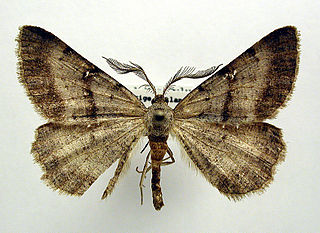
Selidosema brunnearia, the bordered grey, is a moth of the family Geometridae. The species was first described by Charles Joseph Devillers in 1789. It is found in central and southern Europe, Asia Minor, Transcaucasia and North Africa.
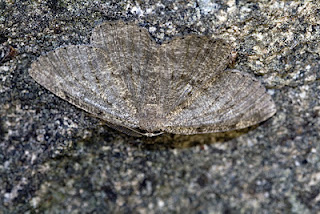
Gnophos dumetata, the Irish annulet, is a species of moth in the family Geometridae. It is found in large parts of Europe, except Great Britain, Portugal, the Benelux, Switzerland, Bulgaria, Fennoscandia and the Baltic region. It is also found from north-western Africa to Armenia, Dagestan, and the south-western part of the former Soviet Union.

Scopula minorata is a moth of the family Geometridae. It was described by Jean Baptiste Boisduval in 1833. It is found in Africa south of the Sahara, the Arabian Peninsula and on the islands of the Indian Ocean. Furthermore, it is found in southern Europe. It can be distinguished from Scopula lactaria only by examination of its genitalia.
Mimandria diospyrata is a moth of the family Geometridae first described by Jean Baptiste Boisduval in 1833. It is found on Réunion and Mauritius in the Indian Ocean.
Eupithecia pauxillaria, the parsimonious pug, is a moth in the family Geometridae. It is found in most of Europe, except Ireland, Great Britain, Portugal and northern Europe and the central part of the Balkan Peninsula.

Eupithecia scopariata is a moth in the family Geometridae. It is found in France, Spain, Portugal, Italy, Croatia, Greece and on Corsica and Sardinia.

Sterrhini is a tribe of the geometer moth family (Geometridae), with about 825 species in 19 genera. There are also 6 genera with 36 species tentatively associated with the tribe. The tribe was erected by Edward Meyrick in 1892.
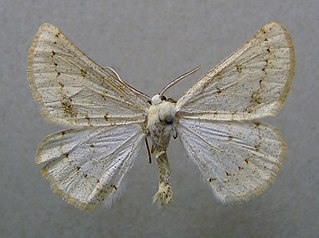
Dyscia conspersaria is a moth of the family Geometridae first described by Michael Denis and Ignaz Schiffermüller in 1755. It is found in south-eastern Central Europe and Asia Minor.
The Comibaenini are a tribe of geometer moths in the subfamily Geometrinae.
Coenotephria ablutaria is a moth of the family Geometridae. It was described by Jean Baptiste Boisduval in 1840. It is found in Spain, France, Italy, Austria, Switzerland, Slovenia, Bulgaria, Romania, Serbia, Croatia, Albania, North Macedonia, Greece, Ukraine, as well as on Sardinia, Corsica, Sicily, Malta, Crete and Cyprus. Outside of Europe, it is found in Asia Minor and the Near East.
References
- ↑ Savela, Markku. "Phyllometra Boisduval, 1840". Lepidoptera and Some Other Life Forms. Retrieved February 7, 2019.
- Pitkin, Brian & Jenkins, Paul. "Search results Family: Geometridae". Butterflies and Moths of the World. Natural History Museum, London.
| This Boarmiini-related article is a stub. You can help Wikipedia by expanding it. |